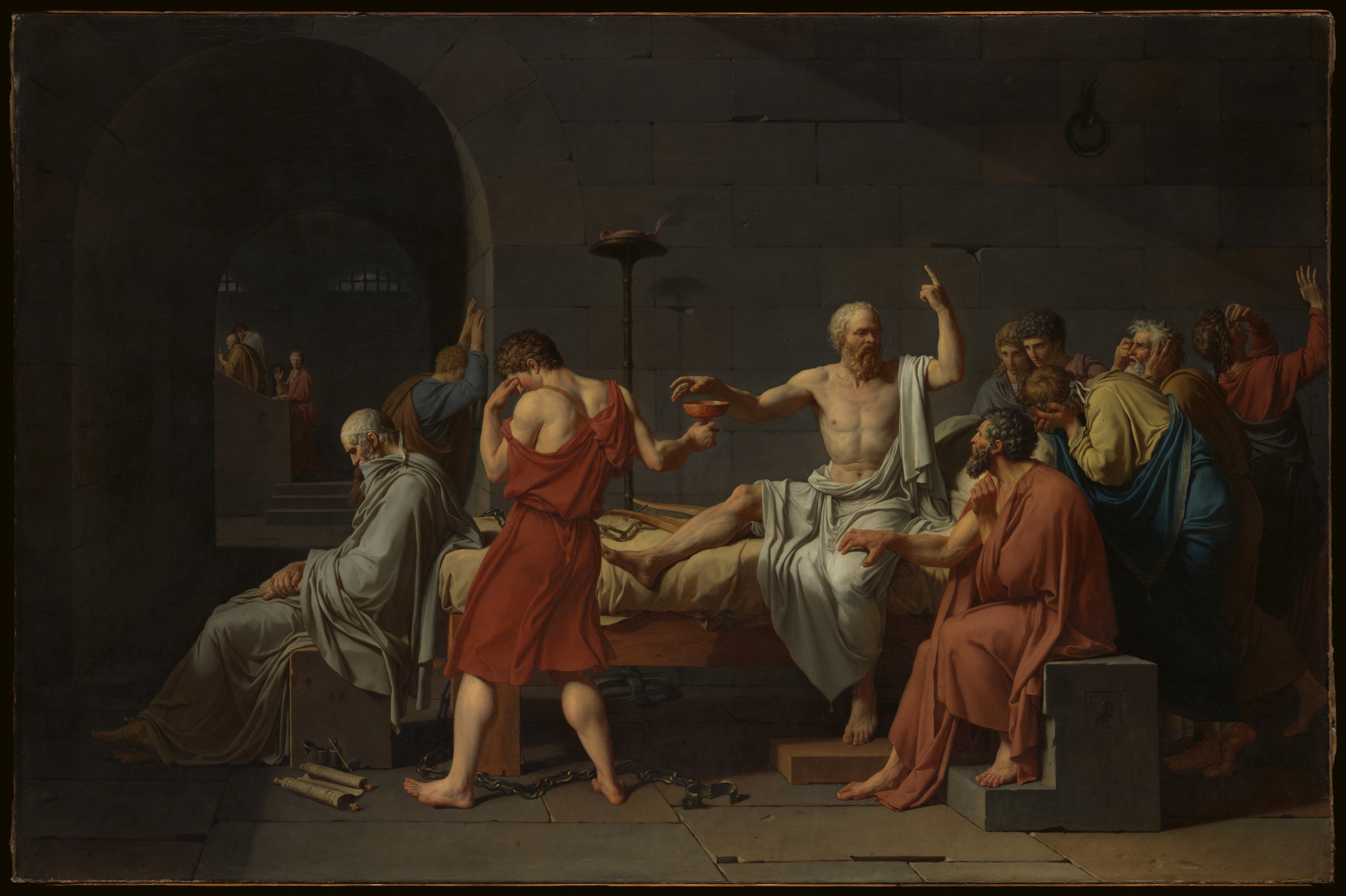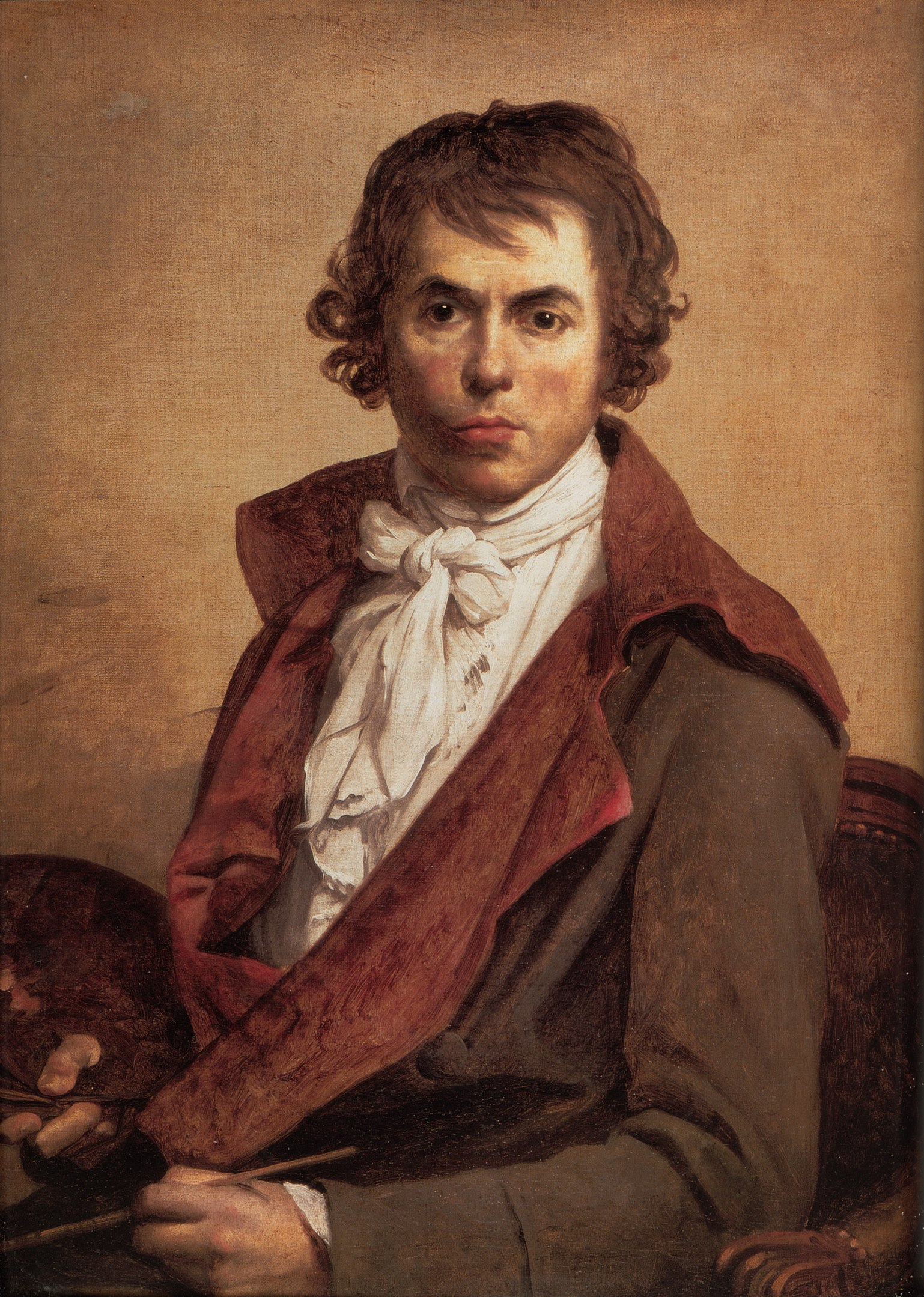In this pivotal work of Neoclassical painting, created just before the onset of the French Revolution, Jacques-Louis David delved into a classical narrative centered on resistance against unjust authority, all within a minimalist, frieze-like composition. The subject of the painting is the Greek philosopher Socrates (469–399 BCE), who had been convicted of impiety by the Athenian courts. Rather than renounce his beliefs, Socrates chose to meet his fate willingly, discussing the immortality of the soul before consuming the poisonous hemlock. Through a web of gestures and expressions, David's artistry vividly portrays the final moments of Socrates's life. The philosopher is depicted on the brink of taking the hemlock, presented by a disciple who cannot bear to witness the event. In his quest for accuracy, David consulted with scholars versed in antiquarianism to meticulously recreate archaeological details, down to the furniture and clothing of the era. Notably, David includes Plato at the foot of the bed, a deliberate reference to the author of the text, Phaedo, which preserved this ancient story, even though Plato was not physically present during Socrates's final moments.
Classic!
If you love the timeless beauty of Western Art History you should check out our selection of premium prints and invite some art to your home :)
P.S. Here's a story of another masterpiece by Jacques-Louis David: The Oath of the Horatii. This Neoclassicist masterpiece portrays an epic Roman drama.


 Jacques-Louis David
Jacques-Louis David